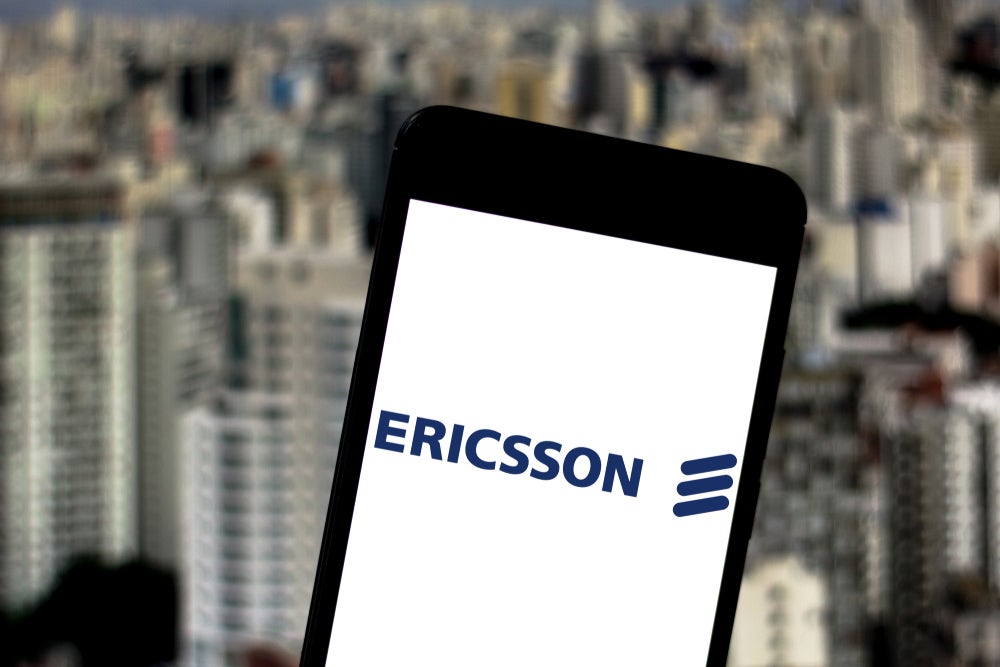The 2017 Digital Banking Club Power 50, the annual listing of the most innovative, influential and powerful people in European digital financial services, has been revealed. Patrick Brusnahan speaks to some of its prominent members on the tricky balance between excellent customer service and sturdy security
As executives of all service industries will tell you, the customer comes first. This means delivering a great customer experience. It is recognised that consumers are more likely to regale friends and family with stories of bad experiences than good ones; therefore it is essential to keep the customer happy.
In banking, a seamless omnichannel experience is regarded by many as the way forward. However, reducing friction holds the risk of also reducing security. In a sector that deals with money, this is unacceptable. So where does the balance lie?
How do you know if you deliver a good customer experience?
Before improving its customer experience, a bank needs to know how customers currently feel about it. This is a tricky task.
Simon Cadbury, head of strategy and innovation at Intelligent Environments, says: “I think banks on the whole find customer experience quite hard to measure. They’re definitely using net promoter score (NPS), almost all banks use it as one of their key metrics.
“They compliment that with other data they’ve got. Sometimes that can be structured customer feedback, such as surveys. There’s also unstructured information that comes from call centres, social media, and comments that have been made through complaints.”
How well do you really know your competitors?
Access the most comprehensive Company Profiles on the market, powered by GlobalData. Save hours of research. Gain competitive edge.

Thank you!
Your download email will arrive shortly
Not ready to buy yet? Download a free sample
We are confident about the unique quality of our Company Profiles. However, we want you to make the most beneficial decision for your business, so we offer a free sample that you can download by submitting the below form
By GlobalDataPaul Horlock, director of payments at Nationwide, explains: “We use all we can, including NPS. We also track across our branches and our internet and mobile banking to look at customer satisfaction internally.
Also, we talk to customers and members every month. We put C-level executives in front of members and see what’s on their mind all around the country. There are also the app store reviews that we get. There’s a number of metrics we measure.”
“Measuring customer experience in the bank, requires looking at the quality of the experience,” says Tomasz Motyl, Chief Innovation Officer at Alior Bank. “Put simply, the quality can be measured as a relationship between the current experience and the prior expectations of the customer.”
“Experience appears while the service is consumed or the client is using service touchpoints. There is also another caveat – customers know precisely what’s the core of the service, a must, something without which the service has no value (i.e. online access to their bank account), and what’s the augmented part which makes it surprising. In Alior Bank, we concentrate on all those aspects. We make sure that our offer is simple and accessible, and that it’s explained transparently.”
Daryl Wilkinson, executive director at Unity Trust Bank, says: “We use the traditional metrics, but we also have independent surveys that look at how easy it is to do business with us. That’s from the application stage to day-to-day management of their account. Another thing we tend to do is focus groups. These used to be face-to-face, but now we’re also doing some crowd sourced focus groups.
“It’s not dissimilar to what I’ve done before where you build a community and rather than asking straight questions, we impose some main questions and get some reactions. It’s instigating a dialogue with the customers. That allows us to understand two things: the objective priorities and needs of that community and also the emotional expression of those priorities and needs. The ability to connect logically is taken for granted in banking. To have an emotional lens is somewhat new to the industry.”
Even as a mobile-only bank, Monzo looks at the traditional customer experience metrics, but in fact does not put too much weight on more modern review methods.
Tom Blomfield, CEO of Monzo, explains: “We use a few things, nothing that would surprise you. We use net promoter score; last time I checked we were plus 83. We measure retention, people who sign up compared to those still using Monzo six months later – this figure is currently at 75%.
“We do a lot of community work on our forums and on social media. We get people into the office to talk about how they use the app. NPS and retention would be our main two.
“We look at [app store reviews] but they can be gamed so easily. With the new iOS rating system, you can prompt your users to give you five stars. We haven’t yet done that, we look at what people are saying but it’s such a low volume. We receive around 10,000 in-app chats a week, which is much higher. We mine those and have human beings responding to all of them.”
At Zopa, Giles Andrews, Co-Founder and Chairman of Zopa says:
“We measure NPS of all of our customers and more importantly we measure them throughout the life of a loan. We even include people who have previously been in arrears and people we’ve had to collect from. “
“We don’t measure people who are currently in arrears as I think that would be misleading. We like to think it’s a very good cross-section of our customers. I’m proud to say our scores are consistently in the high 70s, which puts us up with the digital greats such as Amazon or Google. If you compare us with the big banks, which are often in the 30s and sometimes negative, we’re very proud.”
Will Beeson, Head of Operations & Innovation at Civilised Bank, adds: “Our business model and what we believe makes us unique is the face-to-face human relationship management team we deploy in the local community to support our customers. It’s less about going digital, moving from a traditional branch based model to a digital-only model, and it’s more about building something from the ground up. Leveraging what’s available in terms of technology and delivering a first class human customer experience. We measure our customer experience based on direct feedback.
“Obviously, we’ll look at industry standard things such as NPS to make sure that we’re comparing our performance to our peers.”
However, some experts believe that you cannot measure customer experience through a form of metric, but it is more objective based.
Alessandro Hatami , says: “The most obvious way to measure customer experience is through two questions: ‘Are customers using your services?’ and ‘Are they able to go end-to-end and fulfil their needs?’
“When a customer approaches a bank, through whatever channel, they have an objective in mind. If they have to change channel to complete their objective, then the bank has failed. If I want to open a bank account online and I can, I have succeeded, if I can’t I have failed. If I want to get a mortgage and I can’t complete the whole transaction online, I have failed. That is the gold measure.
“It’s not going to be day one when you can get all of these things online, but you need to have, in the back of your mind, when the customer comes to me, any reason to change channel, is a failure. If you study this principle and guide yourself in whatever choices you make going forward along with that principle, then you cannot fail.”
Cadbury agrees that measuring customer experience may not be as black and white as an NPS.
“I don’t think there is a recognised way of tracking the entire customer journey through account opening, onboarding and the ongoing process,” he adds.
How do customer experience expectations differ when in physical channels or digital channels?
Customer experience can be a very general term. Obviously, expectations can change depending if somebody wants to open an account in a branch or check their balance on a tablet. How does a financial institution account for this?
Simon Cadbury states: “There’s definitely a stronger desire to look across the omnichannel experience. That is something that is growing in importance in certain parts of the market.
“The whole thinking behind it has matured. There are many institutions that are trying to think of the customer experience per say as opposed to the channels that they are using. They’re looking to offer digital within the branch so there’s consistency across the whole experience. There still remain a large number of examples where things tend to fall off.”
Wilkinson purports that there is no real difference between physical and digital banking experiences.
He says: “Actually, I think they’re similar. They want access how and when they need it. They need access to be efficient and for it to be consistent. They don’t want a different experience depending on the channel.
“The other thing I would say is that they value the experience and the human touch. When you call us, you always speak to a human, never a machine. That’s valued by our customers.”
Horlock concurs: “There’s no substitute for talking to people, so we’re working hard on things like online chat to make it the same.”
“Alessandro Hatami insists that it is less about differing experiences between channels, but making sure each channel can help a customer achieve their objectives.
We like to think that customers differentiate between channels,” he explains. “What customers ultimately want is a banking service, but they don’t care about the bank, they care about what the bank allows them to do.
“I don’t care about getting a mortgage, I want a house. I don’t care about a loan, I want a holiday. Any time the bank starts thinking of itself as a destination or an end objective, that is when it starts having problems.”
Tomosz Motyl makes the case that the bank needs to be prepared for any situation the customer may bring.
“Customers have different preferences in different contexts,” he explains. “When they are in a rush, they prefer digital channels, but when they have more time to plan their future, investments or loans they prefer to get quality advice.
“And just because we may have one client changing their context we need to ensure that quality of service in digital as well as traditional channels supplement each other. On the other hand, we will not change the paradigms – digital is becoming a dominating channel.”
Simon Cadbury adds: “What you should never do is ask a customer to start a process in one channel then continue it in another one.
“If the customer wants to go to the branch, fine, but I don’t think you should force one to do so. You can issue cards to a mobile phone now to make contactless and remote payments. That’s something that can help bridge the gap.”
Customer experience vs. customer security?
A common question when considering customer experience is: does it hinder security? Obvious, as a sector dealing in money, security is of the utmost importance, possibly more than in any other sector.
However, having that hinder a customer’s experience is no way to keep consumers happy and certainly no way to work as a financial institution. So where is the line?
“I think everyone is struggling to offer the optimal blend of a seamless user experience and security,” Cadbury explains.
“Banks have adopted technology that does streamline the experience but it can often be to the detriment of itself. Many of them make good headlines, but in reality, are not practical on a mass scale. Many of them are putting tolls on security for the sake of customer experience.”
Beeson adds: “There’s a balance. It’s not even just balancing customer experience with security, but the nuance of getting customers comfortable with various ways of interacting with a bank.”
Tom Blomfield believes that security and customer experience should work hand-in-hand.
“I think great security can be totally unobtrusive,” he describes. “If you think hard about the various things you are protecting the customer from, it is easy to protect in an unobtrusive way. If it’s ‘someone can see my balance’, it’s very different from ‘someone can claim my entire account’. You can put different tiers of security in place depending on the threat.”
Wilkinson also states the need for this scared ‘balance’. He says: “It’s not a stumbling block, but there is a balance that needs to be met. Security has multiple layers that need to be optimised. Depending on what the customer is doing, you want the security to be enhanced and to be layered to give the balance of ease of use, as frictionless as possible, but as the transaction becomes more sensitive or valuable, it helps to put in a bit of friction.
“Customers don’t mind friction if it is designed friction versus something silly that we can clearly see that is a form for the sake of a form or putting in a password more than once when it’s not needed.”
Moytl argues: “Security in banking is a must. This is the area that no bank will compromise on. We treat security as another challenge which we need to take into consideration while designing our technology and products.
“We have started our biometric journey with the introduction of identity verification through Apple’s Touch ID in our mobile banking application. Currently, we are also planning to implement two other methods – voice and facial biometrics.
“We’ve chosen face and voice biometrics methods, because combination of these can be used in all bank’s channels. It means that our customers will be able to verify their identity in the same way, every time, regardless of the channel.”
Is the password set to be replaced?
One of the more promising developments in security has been biometrics. From fingerprint scanning on smartphones to retina recognition in cameras, it is more accessible than ever. Does this signal the end of the traditional password?
“The future is not the password alone, but the future isn’t biometrics alone,” Cadbury says. “It’s about blending the two and using the right one at the right time. The password will always be there in some form or another, even if just as a backup.
“There are banks that are adopting facial log in or voice biometrics that don’t work right now. The voice biometric can be tricked by someone’s identical twin or the face log in tricked by a moving image of that customer.
“If you consider it as part of a greater security experience where it is just one of the factors, it may well work very well. Using your face to see your balance – yes – but don’t use your face to set up a payee.”
Horlock explains: “We can see the password going. We can definitely see that and we’re actively trying to improve the concept of a mobile phone as a factor or a better route for security. Passwords could be your iris or your thumbprint, but it has to be in a way in which the customer is completely confident in the process.
“It has to be very clear that you are applying your biometric for security. I can see the password going, but it has to be replaced by something that customers intellectually and physically understand.”
Wilkinson counters: “I think the password will be replaced in time, but we’re far away from that. I don’t think it will happen imminently and I don’t think it will be a sudden switch. It will be a migration to a form of biometrics and layered solutions. My belief is that it will eventually be replaced. I don’t feel that the replacements we see today are holistic.”
Tomasz Motyl holds a rather bolder stance. He says: “The future of passwords is no more passwords. The number of passwords that our clients have to remember is skyrocketing. What is more, security requirements for passwords are becoming more complicated. Lastly, technologies that let someone break someone’s password are becoming more effective, so a complicated phrase isn’t a sufficient protection anymore. I do not think that passwords will vanish in the near future, but eventually we expect that.
“Biometric methods have become much advanced in recent years, and the cost of implementing these technologies is steadily decreasing. Due to this I believe that more and more companies, not only banks, will try to authorise its users using biometrics.”
Beeson concurs: “If by password, you mean a static 6-8 digit code associated with a user name and that’s the only piece of security, then that form of password is definitely on its way out and probably gone already.
“Security is increasingly becoming a range of components all taken together. Passwords in the classic sense will most likely be one of them, but it needn’t have to be.”
Blomfield finds that the solution may not be as easy as moving away from passwords.
He continues: “Moving away from passwords basically means that people can’t give away their password. It totally prevents that and removes that attack strategy, but that’s just one factor. There’s no simple solution when it comes to security.”
Giles Andrews also has hope for biometrics and intends to implement the technology as Zopa increases its range of services.
“There’s definitely scope for us to use biometrics. We’re in the process of launching a bank,” he explains.
“As we move towards more typical banking products we will look again at security, including biometrics. We have an advantage in that our technology is proprietary, fit for purpose, and modern. Therefore, we are more flexible in including different technologies than your average bank. We need a compelling case for why different technologies provide better security in a way that doesn’t infringe on customer service.”
Hatami is not as enthusiastic about biometrics as others, but believes that it can help in the holistic sense of helping customers achieve their goals easily. It can even give a competitive advantage.
“As far as I can tell, no customer will switch bank because it offers a biometric device,” he adds.
“If my bank offers me a biometric log-in that allows me an easier log-in and to be authenticated more quickly and make it easier to buy a product, I’m buying a product from the easy place rather than the complicated place that requires me to go into branches.
“If a bank says you can achieve your objectives more quickly with us, then that is an advantage.”
How can consumer concerns over security be overcome to enable digital engagement rates to be increased?
Customers are concerned about the security of their bank. With the seemingly constant breaches, it is hard to blame them.
In 2017 alone, Deloitte, Equifax, Verizon, Wonga, and other financial sector-related firms have suffered from huge cyber-security breaches. All of these were covered exhaustively by the media, lowering the already fragile trust in the industry.
Cadbury explains: “I think the way to tackle that is education of the customer.
“It means talking more to customers face-to-face in branch and making sure you have the correct reassuring messages on digital channels for when they log in or when they register. Possibly sending them reminders through the post or emails about what they should or shouldn’t expect from their bank when it comes to security.”
Blomfield cautiously agrees: “I don’t know if there’s an easy answer to that one. Constant consumer communication is a must.”
Daryl Wilkinson also believes that customer education is crucial.
“It is about education and helping customers understand that they can do the same things in branch online,” he says.
“Once you’ve educated them on that, it tends to get accepted quite well and you will see more transactions online.”
Horlock adds: “I think we’re all grappling with this and there will be a lot of right answers and a lot of wrong answers. The big thing I would say is what we do, we have to do with our members, not to our members. And they need to be aware of that mentality.”
“Security is always ranked high on the mind of consumers nowadays,” Motyl continues.
“Understanding and harnessing the relationship between consumers’ security concerns and their preparedness to engage in digital environment is crucial. At Alior Bank, customer education is a major selling point in lessening concerns about security. Digital banking users need to know what their banks are doing and understand how security methods are working.
“Banks should also remember to implement only these security methods that are understandable, reasonable and dependable. Don’t forget that just one safety failure leads to the total loss of trust of a large group of customers.”
Beeson adds: “Empathy is the biggest factor. It goes back to the point on having six different factors that can be used in coordination. You need to appreciate that different people will have different feelings that may not ally with the foremost security expert. Respecting that desire is key. Frankly, that mindset can cover everything customer experience related.”
Cadbury concludes: ““As with everything, the best experience is one that is personalised. We’re looking into application processes that are conversational and adapt. They aren’t a one size fits all form.
“They ask each customer only the questions they need to be asked and not those that aren’t relevant. By not capturing unnecessary data, you can offer the customer a lot more comfort.”







